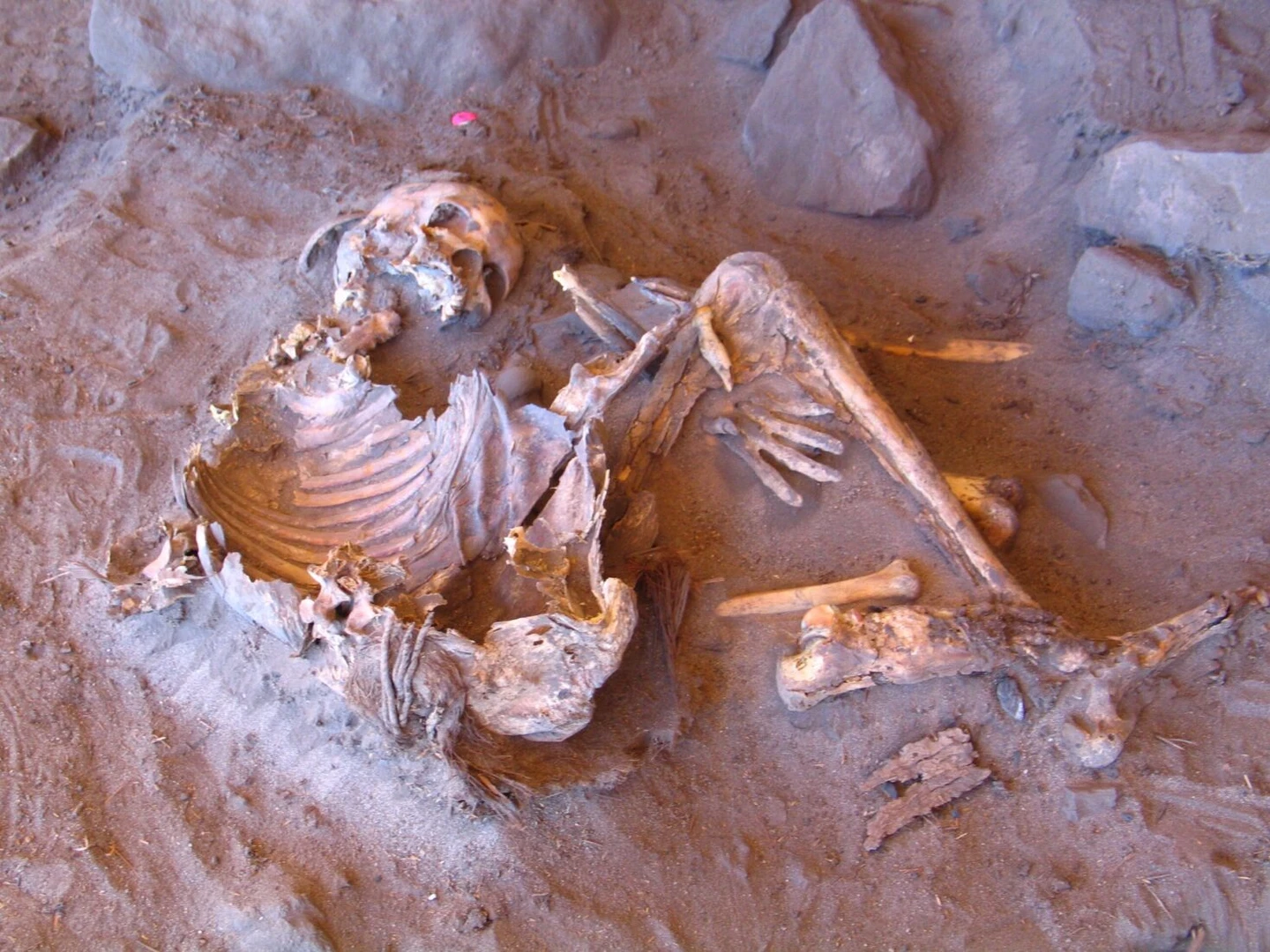Lost civilization of Green Sahara: DNA study sheds new light
 View from the Takarkori rock shelter in Southern Libya. (Photo via Archaeological Mission in the Sahara/Sapienza University of Rome)
View from the Takarkori rock shelter in Southern Libya. (Photo via Archaeological Mission in the Sahara/Sapienza University of Rome)
An international team of researchers from the Max Planck Institute for Evolutionary Anthropology has successfully sequenced the first ancient genomes from the Green Sahara, a period when the vast desert was a lush, savanna-like environment.
The study, published in Nature, sheds new light on the genetic history of early North African populations.

Unraveling mysteries of Takarkori rock shelter
The team analyzed DNA from two naturally mummified individuals, dating back 7,000 years, excavated from the Takarkori rock shelter in southwestern Libya. Their findings reveal that these ancient cattle pastoralists belonged to a long-isolated and now-extinct North African lineage.
Despite previous theories suggesting large-scale migrations, the genomes indicate that animal husbandry may have spread into the Green Sahara through cultural exchange rather than genetic mixing. Additionally, the study found no evidence of sub-Saharan African ancestry in these individuals, challenging earlier interpretations that the Green Sahara served as a migratory bridge between northern and sub-Saharan Africa.
A glimpse into African Humid Period
The research provides critical insights into the African Humid Period, which lasted from 14,500 to 5,000 years ago. During this time, the Sahara was teeming with lakes, rivers, and vegetation, allowing human communities to thrive. However, as aridification set in, the region transformed into the world’s largest desert, erasing much of its habitable landscape.
DNA preservation in the Sahara’s extreme climate is rare, making this study a significant breakthrough in ancient genetic research. The genomes of the Takarkori individuals show that their ancestry primarily derives from a North African lineage that diverged from sub-Saharan populations around 50,000 years ago—coinciding with modern human migrations out of Africa.
A lost lineage still present in North African DNA
The study reveals a deep genetic continuity in North Africa, showing that this ancient lineage remained isolated for thousands of years. While it no longer exists in an unadmixed form, its genetic legacy remains a key component of modern North African populations, underscoring their unique heritage.
Further analysis found genetic ties between the Takarkori individuals and 15,000-year-old foragers from Taforalt Cave in Morocco. These early humans were associated with the Iberomaurusian lithic industry, predating the African Humid Period. Surprisingly, both groups were equally distant from sub-Saharan African lineages, indicating that the greening of the Sahara did not facilitate significant gene flow between the two regions.
“Our findings challenge previous assumptions about North African population history and highlight the existence of a deeply rooted, long-isolated genetic lineage,” said first author Nada Salem from the Max Planck Institute for Evolutionary Anthropology.

Green Sahara: Pastoralism spread through cultural exchange
The study suggests that the spread of pastoralism in the Green Sahara was likely driven by cultural exchange rather than migration.
“This discovery reveals how pastoralism spread across the region, transforming human societies without requiring major genetic mixing,” added senior author Johannes Krause, director at the Max Planck Institute.
Senior author David Caramelli from the University of Florence emphasized the broader significance of the findings: “Ancient DNA research is crucial for reconstructing human history in regions like Central Northern Africa, offering independent support for archaeological theories.”
By unlocking the genetic past of the Sahara, the study enhances our understanding of human migrations, adaptations, and cultural evolution in one of the world’s most enigmatic landscapes.



